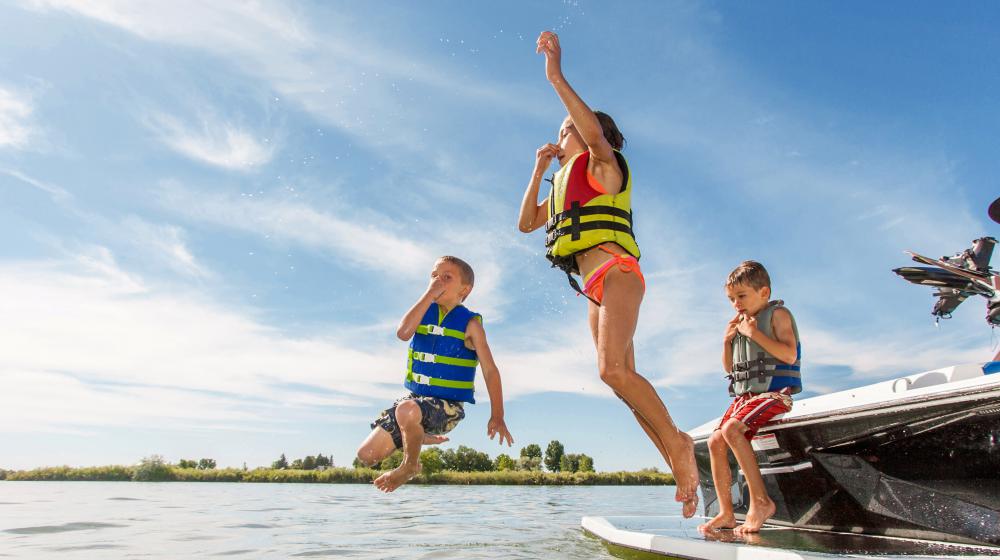Summer Water Safety Tips

Wear U.S. Coast Guard-approved life vests if you don't know how to swim. (Photo by Adobe Stock)
With the temperatures rising, many people are heading to the pool, river, or lake to beat the heat. It’s important to keep water safety in mind when out with friends and family.
Did you know that unintentional drowning rates are up in recent years? According to the U.S. Centers for Disease Control and Prevention, approximately 4,000 accidental drownings deaths occur each year in the United States.
We want you to be safe, while also creating fun memories this summer. Here are a few water safety tips to keep in mind.
- Learn how to swim. It’s estimated that at least half of U.S. adults have never taken swimming lessons! Leaning how to swim reduces the risk of drowning. You’re never too young or old to enroll in swimming lessons!
- Wear U.S. Coast Guard-approved life vests. Make sure adults and children are wearing appropriately sized vests and that the vest type is appropriate for the intended activity. A life jacket that fits well is secure, comfortable, and adjustable. It’s tempting to put inflatable arm floaties on children when they are swimming. But it’s important to note that floaties are not substitutes for life vests. While they’re popular to wear, they can provide a false sense of safety. For more information about the types of life vests and the laws that govern their use, visit the U.S. Coast Guard’s website.
- Supervise the area constantly and never let children swim unattended even if they have had swimming lessons. If you can, swim in bodies of water where lifeguards are present. If you’re swimming in areas where there is no lifeguard supervision, scan the body of water constantly. If your family is out at the lake, river, or pool, always be conscious of what’s going on. A good rule of thumb is to scan the water every 20 seconds and be able to reach the water in 10 seconds. Weaker swimmers of all ages and children can use life jackets in a pool. Children should always wear life jackets when in and around natural bodies of water. For more swimming safety information, visit the CDC and American Red Cross websites.
- Drowning rates were highest among children aged 1-4 years. If a child is missing, check the water first. Child drownings are silent and can happen fast. Accidental drownings often happen when children have been missing less than five minutes!
- If you have a pool at your home, keep a life preserver and a shepherd’s crook or other rescue hook near the pool. Also, bring a cell phone to the pool in case there is an emergency. You can store the phone in a waterproof pouch to avoid any accidental water damage.
Accidents happen fast. It’s always a good thing to be prepared for when the unimaginable happens. If you don’t know CPR, consider enrolling in a class. You never know when it may come in handy.
For more Summer Safety Tips, check out this newsletter!
We hope you have a safe and fun summer!
Subscribe to Extension for Real Life
Fill in the information below to receive a weekly update of our blog posts.








